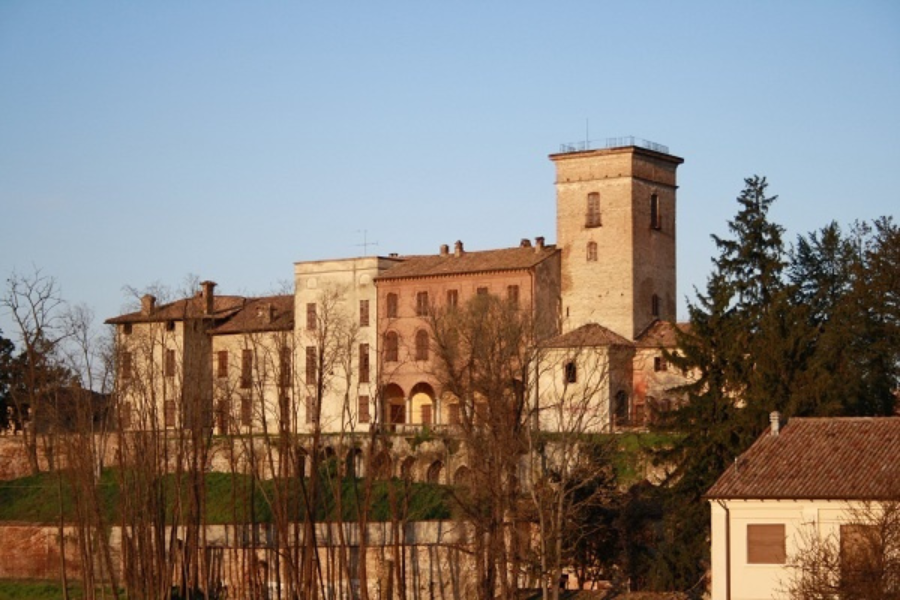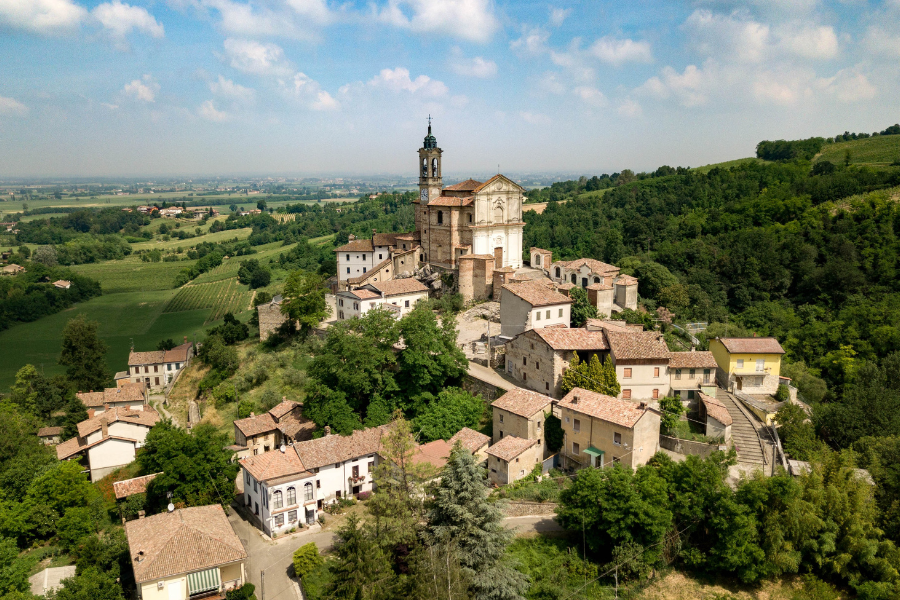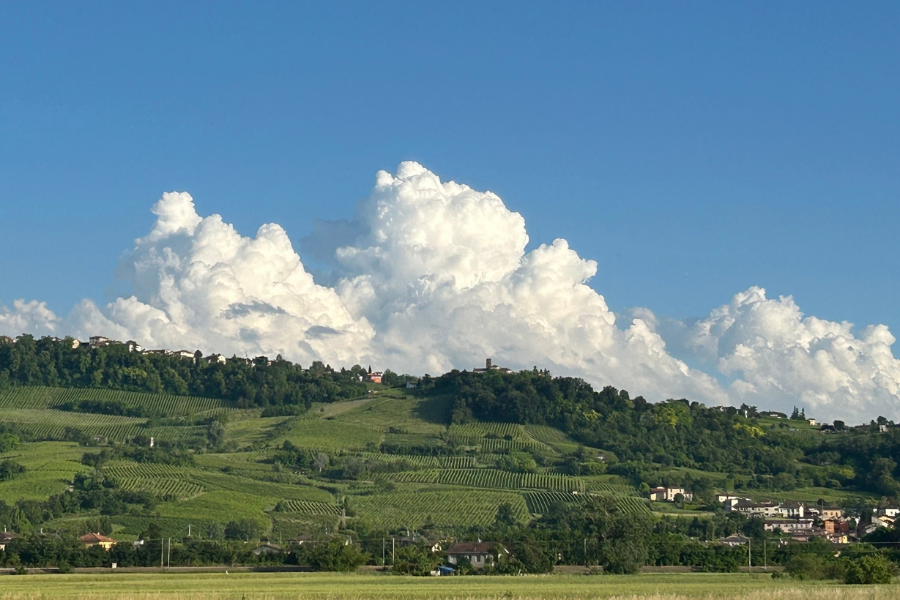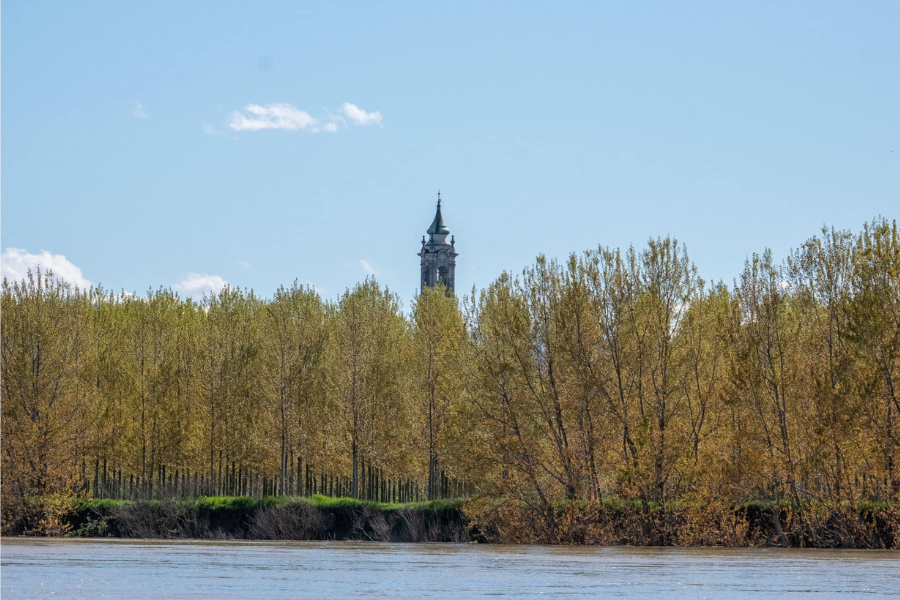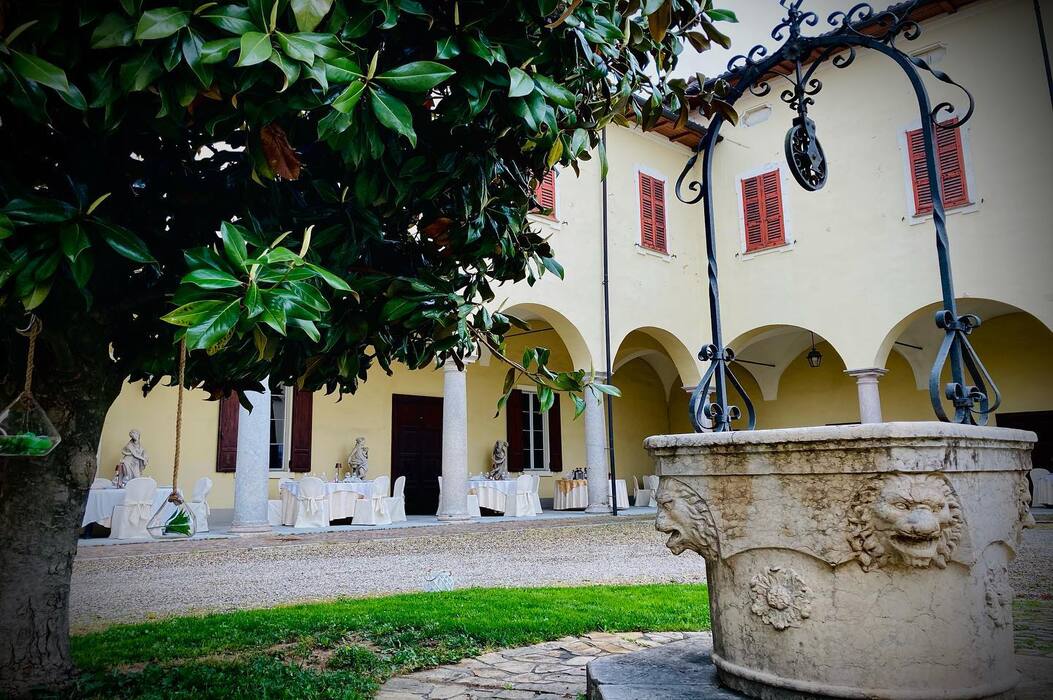Santa Maria della Versa and the birth of sparkling wine
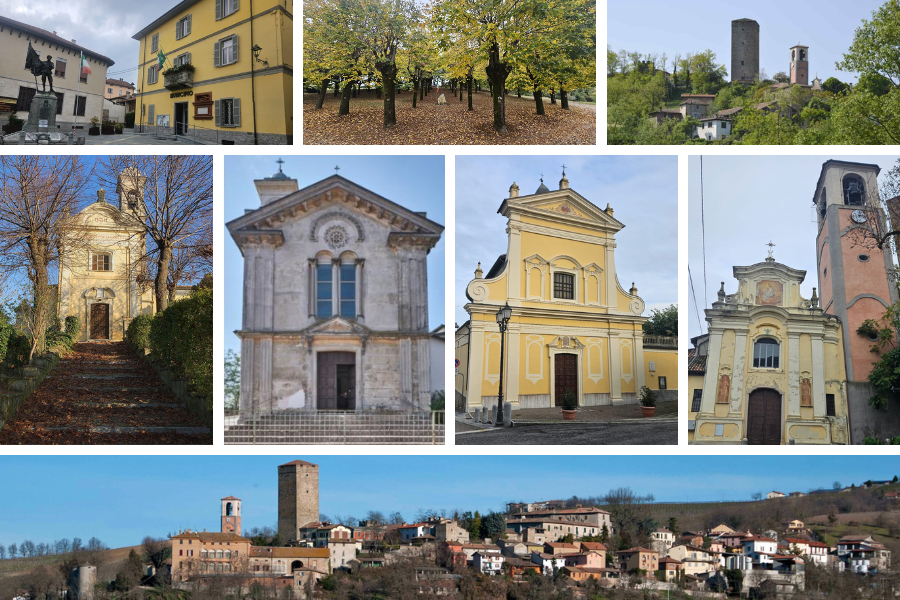
The village
The municipality of Santa Maria della Versa is located in the hills of the Oltrepò, in the middle valley of the Versa stream. It is part of the Oltrepò Pavese Mountain Community.
Cover images taken from the website of the Municipality of Santa Maria della Versa
Its history
The toponym Soriasco appeared in the area for the first time in a confirmation of donation to the monastery of Bobbio by Emperor Lothair in 842 and Frederick I, with a diploma dated 8 August 1164, assigned Soriasco to the city of Pavia.
In the list of the lands of the Pavia county in 1250, Suriascum cum curia is mentioned as belonging to the Oltrepò. It was a village fortified by walls The settlement, however, is probably of Roman origin.
In 1349 Soriasco belonged to the Giorgi family, in 1639 it was a fief of the Gambarana family and was part of the fief of Donelasco.
Suriascum is included in the roads section of the Statuta stratarum of 1452 in theUltra Padum.
As recorded in the deed of possession dated 27 October 1652, Soriasco was enfeoffed by the royal chamber of Milan to Count Gerolamo dal Pozzo. Pressed by economic problems, his son Gaetano already in 1690 had to sell the village to the Gambarana counts, whose lordship lasted until the abolition of feudalism.
In the 19th century, on the valley floor at the foot of the Soriasco hill, the new settlement called Borgata Versa, or Madonna della Versa, developed. The place was mostly uncultivated, overgrown with thorns and oaks: only the small chapel of Madonna Val Versa stood there, with its painted panel of the Virgin, believed to be the dispenser of graces. A village developed around it, where a market was held.
The visit
Church of the Holy Name of Mary
⛪At the centre, take Via Garibaldi to the right and reach Piazza del Municipio to visit the Santissimo Nome di Maria parish church, which houses the image of the Madonna from which the town took its current name.
Tradition has it that a miracle took place here: a deaf-mute girl from the hamlet of Villanova used to pause in prayer in front of the sacred image every day, when she witnessed the apparition of Our Lady, who restored her speech and hearing.
An oratory was built on the site of the apparition. In 1639, the present church was built, incorporating the old chapel.
In memory of the miracle, the façade of the church does not face the centre of the village, but towards the hamlet of Villanova.
The interior, in Baroque style, features a majestic altar with two large gilded columns flanking the miraculous painting of the Virgin (15th century). Above the wall behind the baptistery is a fresco of the Baptism of Jesus.
From the square, continue along Via Garibaldi, then Via Cavallari and at the crossroads, turn left into Via Palazzo, until you reach Villanova, where there is a 15th-century fortified house.
In Pizzofreddo, an ancient customs post of the Duchy of Parma and Piacenza, there is a 14th-century dovecote tower.
The Tower of Soriasco
The characteristic hamlet of Soriasco, on top of a hillock dominating the town, is well worth a visit. It was fortified as early as the 11th century by a fortress with extensive walls reinforced by twelve towers. The imposing tower of Soriasco, clearly visible even from a distance – it was built entirely of local stone, has a square plan of 10 m per side and is some twenty metres high.
The ensemble also included the Giorgi Gambarana castle, disputed in the 12th century between the people of Pavia and Piacenza. Destroyed between 1215 and 1216, it was not rebuilt. The name of the castle was later given to an 18th-century residence.
Peculiarities
🌷Casale Denari: in the hamlet of Casale Denari, you will find Casale Denari. It is an ancient medieval complex and Augustinian monastery. Since 2018 it has been transformed into a Flower Resort, one of the first in Italy, with suites surrounded by the green hills and their scents, a SPA and a panoramic infinity pool.
Besides being a wonderful location for private events, flower workshops are organised here with flowers from the gardens of the farmhouse itself. It is a true oasis of peace and well-being.
Sparkling wine and wine traditions
🍾Santa Maria della Versa is originated the sparkling wine production of the Oltrepò Pavese. In 1905, Cantina La Versawas founded, and in 1935 it created Gran Spumante Brut, the first Italian vintage classic method sparkling wine.
This is why Santa Maria della Versa is a historic reference point for lovers of bubbles.
🍷Other local wineries producing sparkling and other Oltrepò Pavese wines are:
Azienda Agricola Manuelina, in the hamlet of Ruinello, has been producing wines for over seventy years.
Azienda Agricola Calatroni, whose Spumante Metodo Classcio Pas Dosé has just received the Bollicina dell’Anno 2025 award.
Tenuta Riccardi, which started its winemaking journey back in 1912.
La Rovere, in the hamlet of MOntarco, which was a separate municipality until the 19th century.
Where to eat
🍽️Ci are a number of restaurants and agritourisms in Santa Maria della Versa, ready to welcome visitors and leave them with extremely pleasant memories of local dishes and wines.
Agriturismo Cà Versa, which in the elegant covered veranda created from the barn of the old farmstead, brings seasonal and zero-kilometre dishes to the table.
At Astra offering original and creative menus
Osteria Versa, Restaurant and Pizzeria, to please everyone’s palate.
Sasseo Restaurant in Sasseo, which has a large vegetable garden full of herbs and other products of the earth.
The municipality of Santa Maria della Versa is a perfect destination for… admire ancient towers and rows of vines as far as the eye can see, over a fine glass of bubbly! 🥂

 Save your favorite events
Save your favorite events




